La Crau with a view of Montmajour
The painting La Crau with a View of Montmajour (Fig. 1) is a unique example of the use of material-sensitive x-ray radiography using RToo imaging equipment with WidePIX detectors. It is an oil painting on canvas, showing a view of the landscape near the French city of Arles with the ruins of Montmajour Abbey in the background. In the lower left corner is the signature “Vincent.” The current owner purchased the image at an auction, where it was listed as a copy by van Gogh. With its visual style and thematic focus, this work fits the style of Vincent van Gogh’s work in 1888.
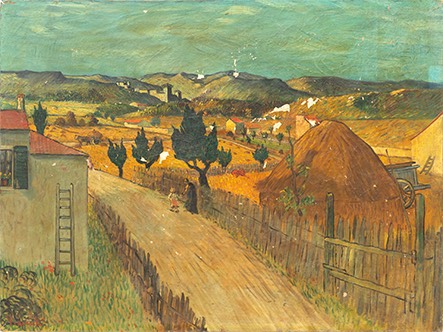
Fig. 1 La Crau with a View of Montmajour
signed Vincent
During the radiographic survey of the work, it was found that there is another image under the painting of the La Crau landscape, namely the figure of a female nude shown from behind (Fig. 2. and Fig 3.).
Fig. 2 La Crau with a View of Montmajour
x-ray radiography in high resolution.
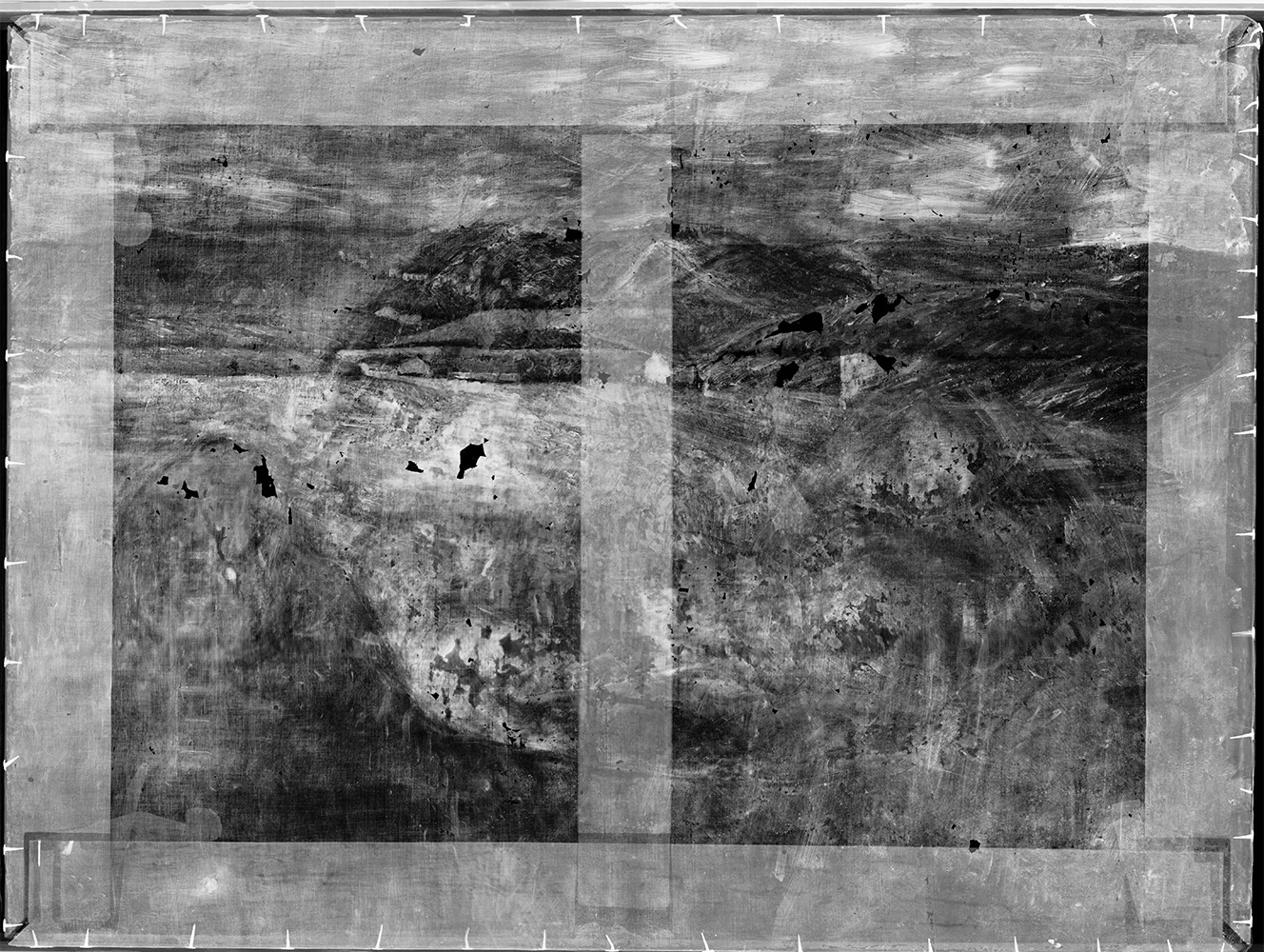
Fig. 3 La Crau with a View of Montmajour
material-sensitive x-ray radiography with a drawing of a female nude in the lower layers of the painting showing the distribution of individual pigments in the image.
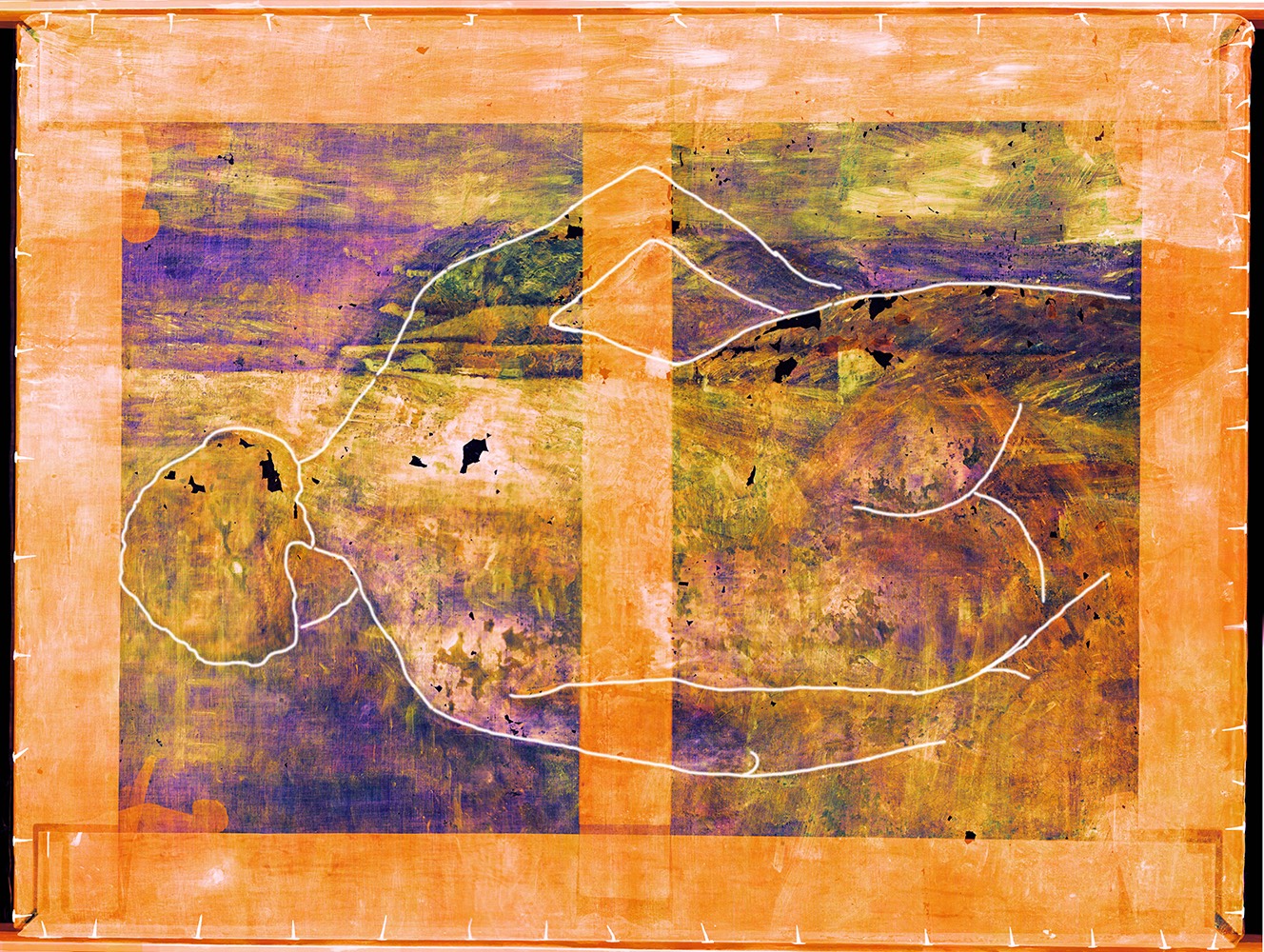
This figure was commenced only with brown tones in the shadow parts and white pastes in the illuminated parts of the figure. The style of underpainting and the position of the model show that it is an incomplete study painting of a nude, similar to the models van Gogh drew and painted in classes at the local academy in 1886-88, during his Parisian visit. The paste layers of the underpainting were partially scraped before painting the new image, and thus on the surface of the current painting a small relief is visible.
The material-sensitive x-ray images show the exact distribution of different pigments across the image area, as well as the manner in which they are applied in individual parts of the work. Using the separation of individual energy channels, we achieve an accurate survey of the author’s work with individual layers and materials (Fig. 4 and Fig. 5).
Fig. 4 La Crau with a View of Montmajour
material-sensitive x-ray radiography – display of pigments dominated by zinc, chromium and cadmium.
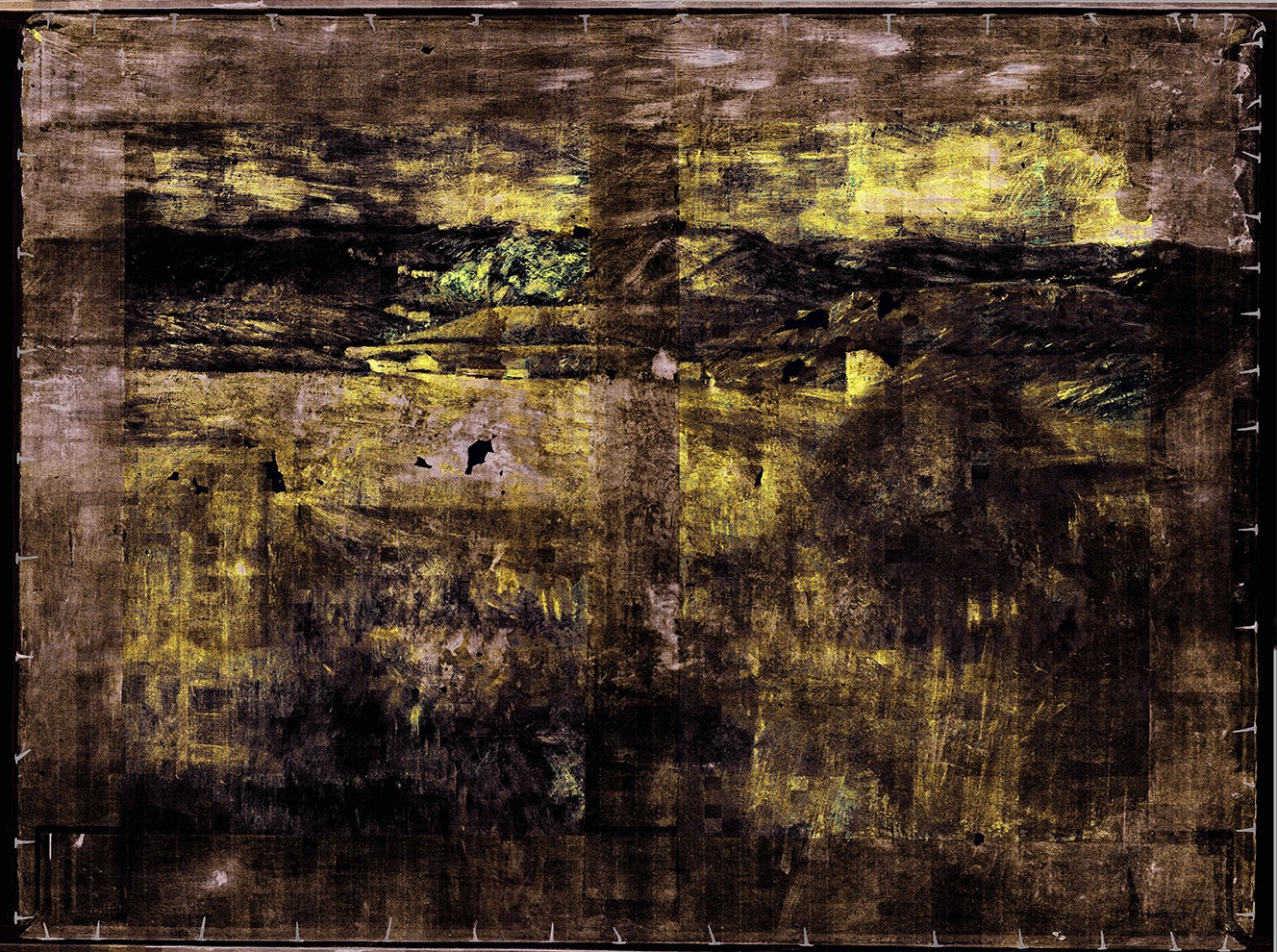
Fig. 5 La Crau with a View of Montmajour
material-sensitive x-ray radiography – display of lead-dominated pigments.
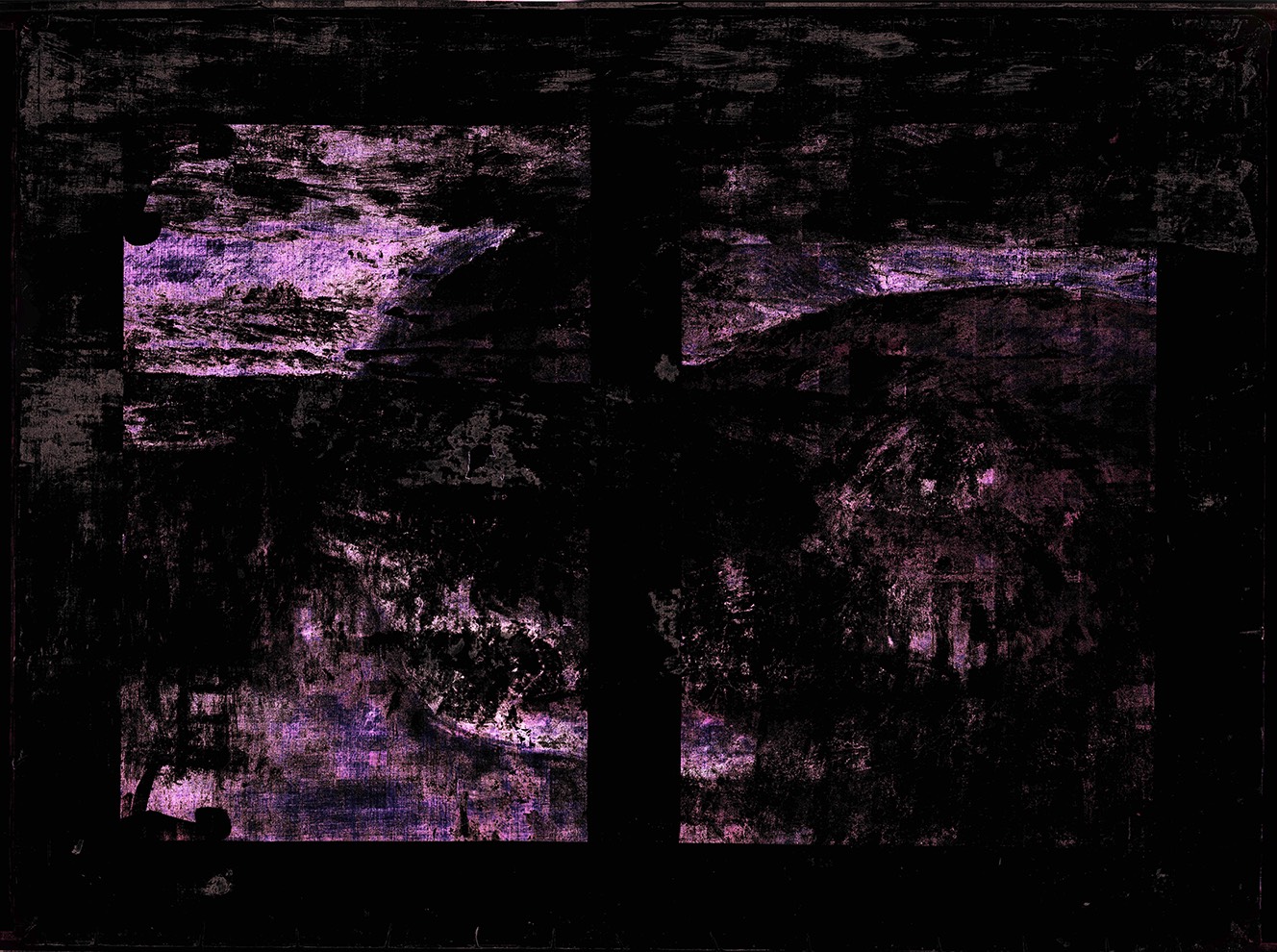
In the subsequent post-production process, it is also possible to show materials that are only related to the layer of paint that we want to visualise (Fig. 6). Only the original figure of the female nude is shown in the picture; all the paint layers from the top landscape painting of La Crau with a View of Montmajour were suppressed here by filtering the signal of individual energy channels.
Fig. 6 La Crau with a View of Montmajour
a black-and-white photograph of material sensitive x-ray radiography showing only the materials (pigments) associated with the original painting of a female nude.
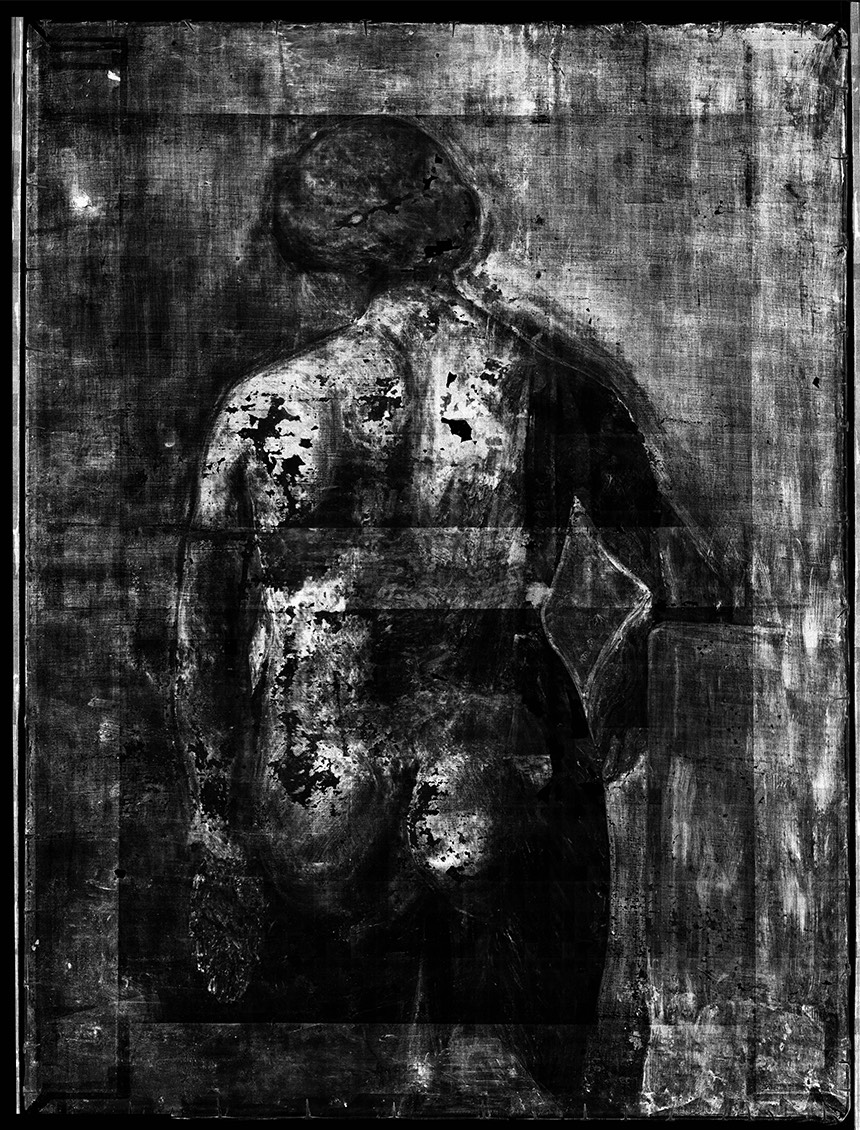
It is evident that this method allows for a completely new way of working with x-ray radiography using the most advanced pixel detectors. The post-production image processing options are enormous and bring with them many ways to process the resulting x-ray image so that they have the greatest possible value for the studied work. For example, the exact representation of a figure in the lower layer of La Crau with a View of Montmajour allows a precise comparison to be made of the presumed author’s painting style with his other works (Fig. 7 and Fig. 8).
Fig. 7 Van Gogh’s studies of a female nude of 1886-7
a) b) c)
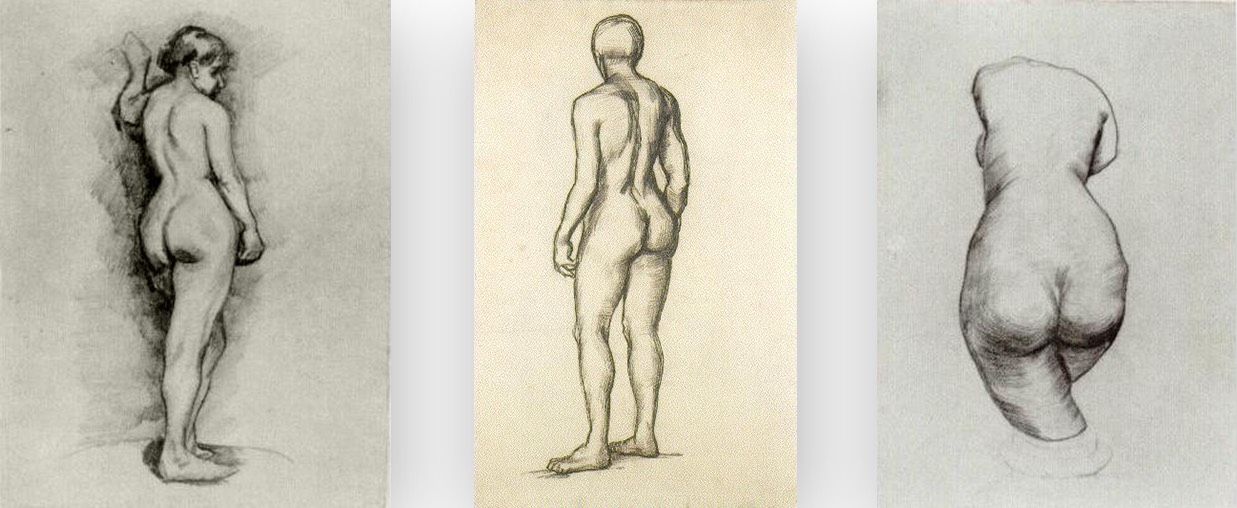
Fig. 8 Vincent van Gogh, Standing Female Nude, 1886-7
this figure shows a striking similarity to the modelling of the figure with the female nude displayed by RToo equipment under La Crau with a View of Montmajour.

